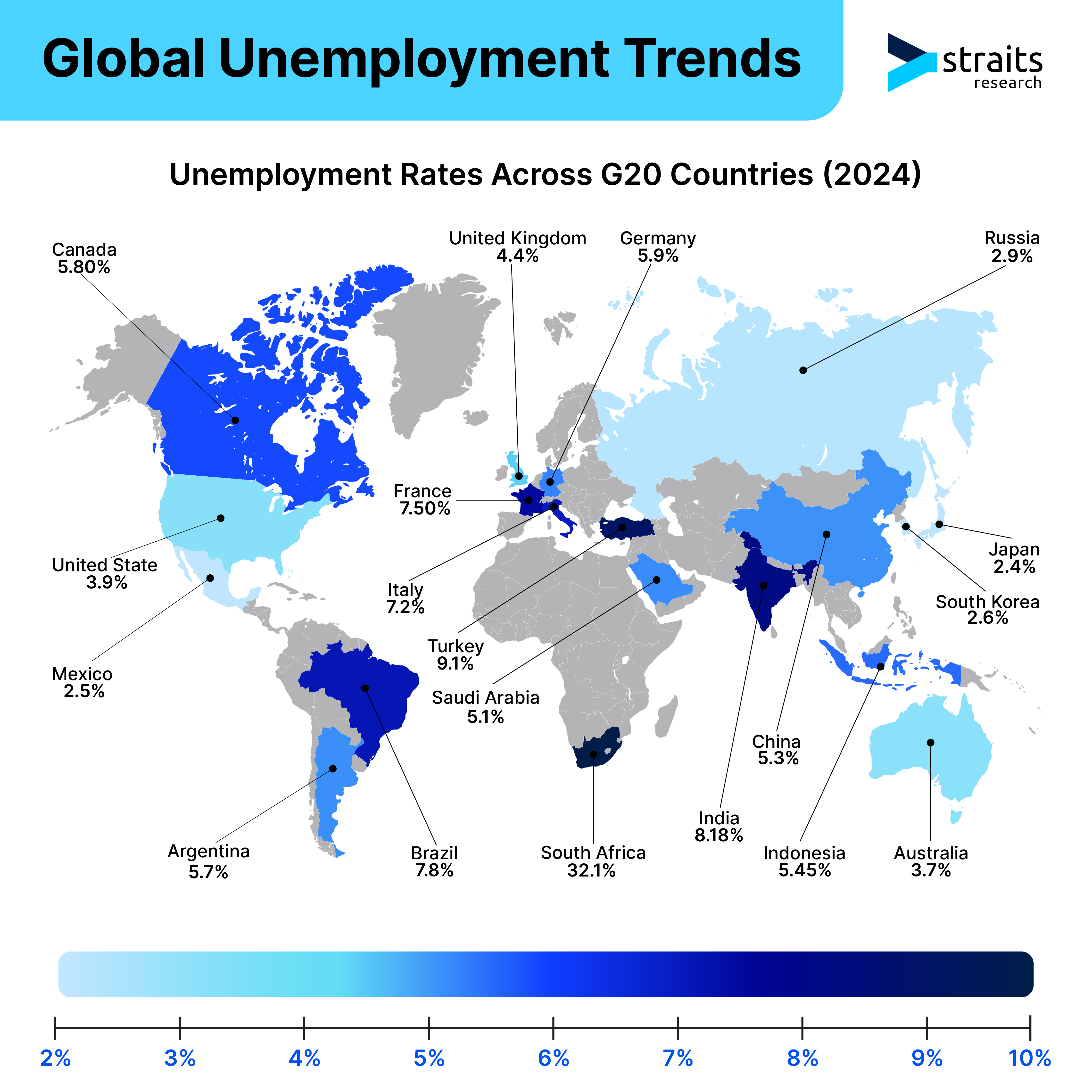Youth Unemployment Rates Surge Worldwide

Unemployment is an ongoing problem in the global economy that has a lasting impact on societies worldwide. Both people and economies are severely impacted by its effects, which range from declining morale to decreasing purchasing power. In 2024, despite recent improvements, the unemployment rates worldwide have increased, raising concerns about expanding disparities and declining productivity.
Youth unemployment
The rate of unemployment worldwide as of March 2024 is 5.2%. Disparities still exist among the G20 countries, nevertheless. With an alarming 32.1% unemployment rate, South Africa leads the list, while Japan has the lowest rate at 2.4%. The problem is worsened because job growth is often slower than GDP growth in many G20 nations, notwithstanding fluctuations. Moreover, in the G20 countries, youth unemployment rates are rising, particularly for those who have just finished high school.
In nations like Turkey, Italy, and India, where a college degree alone does not ensure employment, educational disparities worsen the problem. India has higher youth unemployment rates than any other country in the world, with 30.24% of those with advanced education unemployed, compared to 15.46% of those with intermediate education. India's difficulties demonstrate how difficult it is to integrate young people into the labor globally. In South Africa, youth with only a basic education have a higher unemployment rate (44.83%) than those with an advanced education (31.96%).
Gender Disparities and long-term unemployment
There are still differences in unemployment rates between genders, with women experiencing greater rates worldwide and across G20 countries. Women's unemployment is predicted to rise internationally, with 15% of working-age women wishing to work but not having a job in 2024, compared to 10.5% of men. Women's unemployment in the G20 was 5.0% in January 2024, 0.3 percentage points more than men's. This rate of unemployment was largely steady.
Gender inequalities go beyond barriers to work as women are disproportionately employed in high-risk positions, which results in large salary gaps when compared to males. Additionally, 18.7% of unemployed people in the US have been unemployed for 27 weeks or longer. Most are unmarried women, who comprise a sizable share of the "long-term unemployed" population. With the highest percentage of female unemployment among G20 countries, South Africa underlines the critical need for focused measures.
Interestingly, with a target increase of 25% by 2025, the G20 Employment Process seeks to close the gender gap in labor force participation. Emerging economies still struggle to integrate youth into the workforce. It is essential to use creative methods to achieve universal social protection so that all workers, regardless of job level, are covered.
Future employment will require highly developed intellectual and socioemotional abilities due to technological improvements. Consequently, jobs with high routine content face automation or offshoring, necessitating deliberate effort to equip workers with relevant skills. To successfully address global unemployment, a comprehensive approach that considers differences in opportunity, education, and gender is needed.
Nations may effectively manage the challenges of the contemporary economy and secure economic success for all by promoting inclusive growth, allocating resources toward skill development, and adopting progressive social protection systems. The G20 countries, which account for a sizeable share of the world economy, must set an example by prioritizing inclusive policies that empower people and promote sustainable growth.




